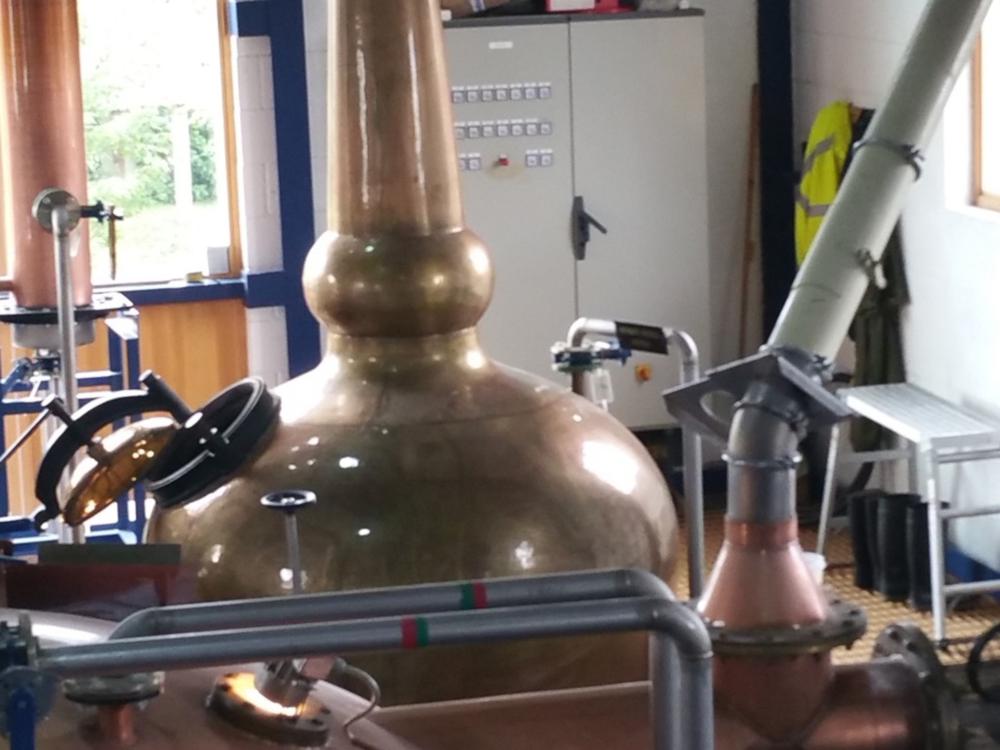What is an ogee?
Published July 12, 2022

An ogee is the name sometimes given to the a bulge (or boil ball) on the upper part of a pot still. While this usage is not the most accurate it does serve exactly the same purpose as a reflux ball. An ogee as defined by Forsyths of Rothes refers to the ‘S’ shape or double bend of a still. The presence of an ogee on a pot still increases the amount of reflux in much the same way a taller still, or an upward slanting line arm does. By forcing the recondensing spirit to drop back into the still and be redistilled a lighter and cleaner spirit is created.
The origin of the word
While the origins of the word ogee are uncertain, it appears to have first been used in the whisky distilling industry to refer to the bulbous chamber which makes up part of a traditional pot still. The ogee sits on top of the distilling pot and, as the liquid heats up, it creates a larger surface area for the vapours to land on. The word however is used for a variety of purposes however such as the ogee arch which has been a feature of architecture for many hundreds of years and are often associated with Gothic designs. Likewise an ogee profile is a decorative moulding typically used for skirting and cabinet covers.
An Ogee is sometimes called
While an ogee infact refers to a the S shaped bend of a still it’s more commonly used to refer to a boil ball, sometimes known as a reflux ball, Milton/Balvenie ball or bulge.
Types of boil ball
Pot stills have four typical shapes: plain neck, ogee, lamp glass and boil ball.
- Boil balls
- Boil balls are most commonly used on wash stills being used to increase copper contact, reflux and ester formation, while decreasing the heavy oily and sulphury notes.
- Ogee
- The ogee is the simplest type of pot still and refers to the ‘S’ shape or double bend of a still. The first bend is the curvature of the shoulders, the second bend turns back towards the straight head, this gives the ‘S’ shape and hence term ogee
- Lamp-glass
- Lamp-glass necks resemble the shape of hurricane lamps. These have a narrow waist and then flare out, this design is also used to promote reflux
Purpose of the ogee
The ogee or onion? is added to the neck of a still to increase copper contact and to increase the amount of passive reflux before guiding the final vapour flow to the lyne arm. The amount of reflux generated is usually a combination of several factors including the ogee, any passive airflow that may cool it, and the heat input into the boiler.
Reflux is the term used when rising spirit vapours hit the cooler sides of the neck, re-condenses and run down the copper back into the kettle to vaporise again. This increases copper contact but more importantly reflux increases the rectifying effect of the still, so producing a lighter spirit. The more the reflux, the lighter the spirit will be.

